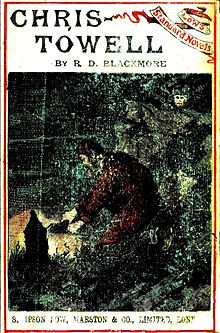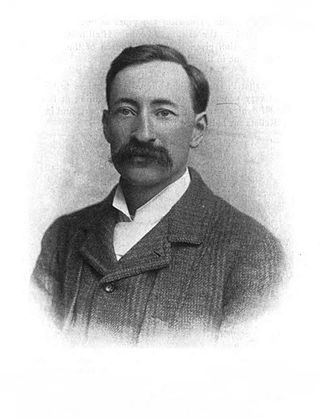
Eden Phillpotts was an English author, poet and dramatist. He was born in Mount Abu, India, was educated in Plymouth, Devon, and worked as an insurance officer for ten years before studying for the stage and eventually becoming a writer.

The Thirty-Nine Steps is a 1915 adventure novel by the Scottish author John Buchan, first published by William Blackwood and Sons, Edinburgh. It was serialized in All-Story Weekly issues of 5 and 12 June 1915, and in Blackwood's Magazine between July and September 1915, before being published in book form in October of that year. It is the first of five novels featuring Richard Hannay, an all-action hero with a stiff upper lip and a knack for getting himself out of tricky situations.

Middlemarch, A Study of Provincial Life is a novel by English author George Eliot, the pen name of Mary Ann Evans. It appeared in eight installments (volumes) in 1871 and 1872. Set in Middlemarch, a fictional English Midlands town, in 1829 to 1832, it follows distinct, intersecting stories with many characters. Issues include the status of women, the nature of marriage, idealism, self-interest, religion, hypocrisy, political reform, and education. Despite comic elements, Middlemarch uses realism to encompass historical events: the 1832 Reform Act, early railways, and the accession of King William IV. It looks at medicine of the time and reactionary views in a settled community facing unwelcome change. Eliot began writing the two pieces that formed the novel in 1869–1870 and completed it in 1871. Initial reviews were mixed, but it is now seen widely as her best work and one of the great English novels.

Moretonhampstead is a market town, parish and ancient manor in Devon, situated on the north-eastern edge of Dartmoor, within the Dartmoor National Park. The parish now includes the hamlet of Doccombe, and it is surrounded clockwise from the north by the parishes of Drewsteignton, Dunsford, Bridford, Bovey Tracey, Lustleigh, North Bovey and Chagford.

Richard Doddridge Blackmore, known as R. D. Blackmore, was one of the most famous English novelists of the second half of the nineteenth century. He won acclaim for vivid descriptions and personification of the countryside, sharing with Thomas Hardy a Western England background and a strong sense of regional setting in his works.

The Hollow is a work of detective fiction by British writer Agatha Christie, first published in the United States by Dodd, Mead & Co. in 1946 and in the United Kingdom by the Collins Crime Club in November of the same year. The US edition retailed at $2.50 and the UK edition at eight shillings and sixpence (8/6). A paperback edition in the US by Dell Books in 1954 changed the title to Murder after Hours.

Margaret Oliphant Wilson Oliphant was a Scottish novelist and historical writer, who usually wrote as Mrs. Oliphant. Her fictional works cover "domestic realism, the historical novel and tales of the supernatural".

Christow is a village and civil parish in the Teignbridge district of Devon, England, about 12 miles (19 km) southwest of Exeter. The village is in the Teign Valley, just off the B3193 road that links Chudleigh and Dunsford. Christow is on the eastern edge of Dartmoor National Park.
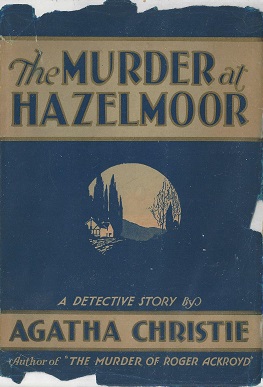
The Sittaford Mystery is a work of detective fiction by British writer Agatha Christie, first published in the US by Dodd, Mead and Company in 1931 under the title of The Murder at Hazelmoor and in UK by the Collins Crime Club on 7 September of the same year under Christie's original title. It is the first Christie novel to be given a different title for the US market. The US edition retailed at $2.00 and the UK edition at seven shillings and sixpence (7/6).
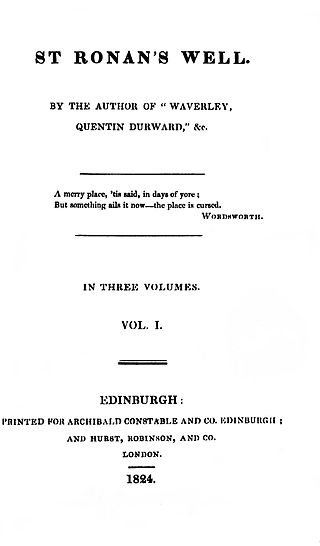
Saint Ronan's Well is one of the Waverley novels by Sir Walter Scott. Set in a fashionable spa in the Scottish Borders, it is the only novel he wrote with a 19th-century setting.

Scenes of Clerical Life is George Eliot's first published work of fiction, a collection of three short stories, published in book form; it was the first of her works to be released under her famous pseudonym. The stories were first published in Blackwood's Magazine over the course of the year 1857, initially anonymously, before being released as a two-volume set by Blackwood and Sons in January 1858. The three stories are set during the last twenty years of the eighteenth century and the first half of the nineteenth century over a fifty-year period. The stories take place in and around the fictional town of Milby in the English Midlands. Each of the Scenes concerns a different Anglican clergyman, but is not necessarily centred upon him. Eliot examines, among other things, the effects of religious reform and the tension between the Established and the Dissenting Churches on the clergymen and their congregations, and draws attention to various social issues, such as poverty, alcoholism and domestic violence.
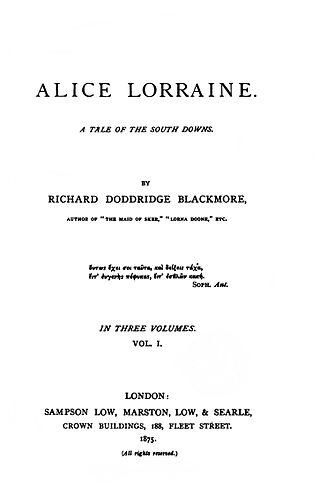
Alice Lorraine: a tale of the South Downs is a novel by R. D. Blackmore, published in 1875. Set in Sussex and Spain during the Napoleonic Wars, the novel recounts the divergent tales of the eponymous heroine and her brother in their efforts to save the noble Lorraine family from ruin.
The Young Men's Magazine is the last of a series of three magazines written by Branwell Brontë and his sister Charlotte. The journals were handwritten mini-books containing articles, stories, letters, and reviews, inspired by and following the model of Blackwood's Magazine and Fraser's Magazine. A notable issue is volume 2, a copy of which was sold in December 2011 for £690,850 at Sotheby's in London. Writing the magazine on the basis of established literary models helped Charlotte and Branwell in their maturation process toward becoming "literary professionals".
Julia I. Sand (1850–1933) was an American woman who corresponded with the American President Chester A. Arthur, beginning in late August 1881. Arthur saved twenty-three letters, all of which were discovered in 1958 after his grandson, Chester Alan Arthur III, sold his grandfather's papers to the Library of Congress. The last surviving letter is dated September 15, 1883. It is not known whether Arthur ever wrote back as no letter from him has ever been found. Sand often referred to herself as the President's "little dwarf", an allusion to the idea that in a royal court, only the dwarf would have the courage to tell the truth.
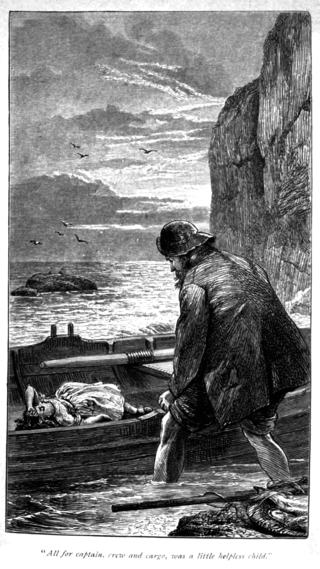
The Maid of Sker is a three-volume novel that was written by R. D. Blackmore and published in 1872. The novel is set in the late 18th century and is about an elderly fisherman who unravels the mysterious origins of a foundling child who is washed ashore on the coast of Glamorganshire, South Wales. It was published subsequent to Blackmore's Lorna Doone, although he had begun writing The Maid of Sker 25 years earlier. Blackmore considered The Maid of Sker to be his best novel.
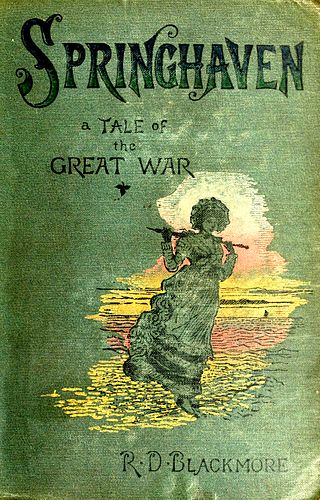
Springhaven: a tale of the Great War is a three-volume novel by R. D. Blackmore published in 1887. It is set in Sussex, England, during the time of the Napoleonic Wars, and revolves around the plots of the villainous Captain Caryl Carne who attempts to aid a French invasion.

Mary Anerley: a Yorkshire tale is a three-volume novel by R. D. Blackmore published in 1880. It is set in the rugged landscape of Yorkshire's North Riding and the sea-coast of its East Riding.

Erema; or, my father's sin is a three-volume novel by R. D. Blackmore published in 1877. The novel is narrated by a teenage girl called Erema whose father escaped from England having been charged with a murder he did not commit. Erema has grown up in exile with her father, and the story begins in California in the 1850s.

Dariel: a romance of Surrey is a novel by R. D. Blackmore published in 1897. It is an adventure story set initially in Surrey before the action moves to the Caucasian mountains. The story is narrated by George Cranleigh, a farmer who falls in love with Dariel, the daughter of a Caucasian prince. Dariel was the last of Blackmore's novels, published just over two years before his death.

Kit and Kitty: a story of west Middlesex is a three-volume novel by R. D. Blackmore published in 1890. It is set near Sunbury-on-Thames in Middlesex.
